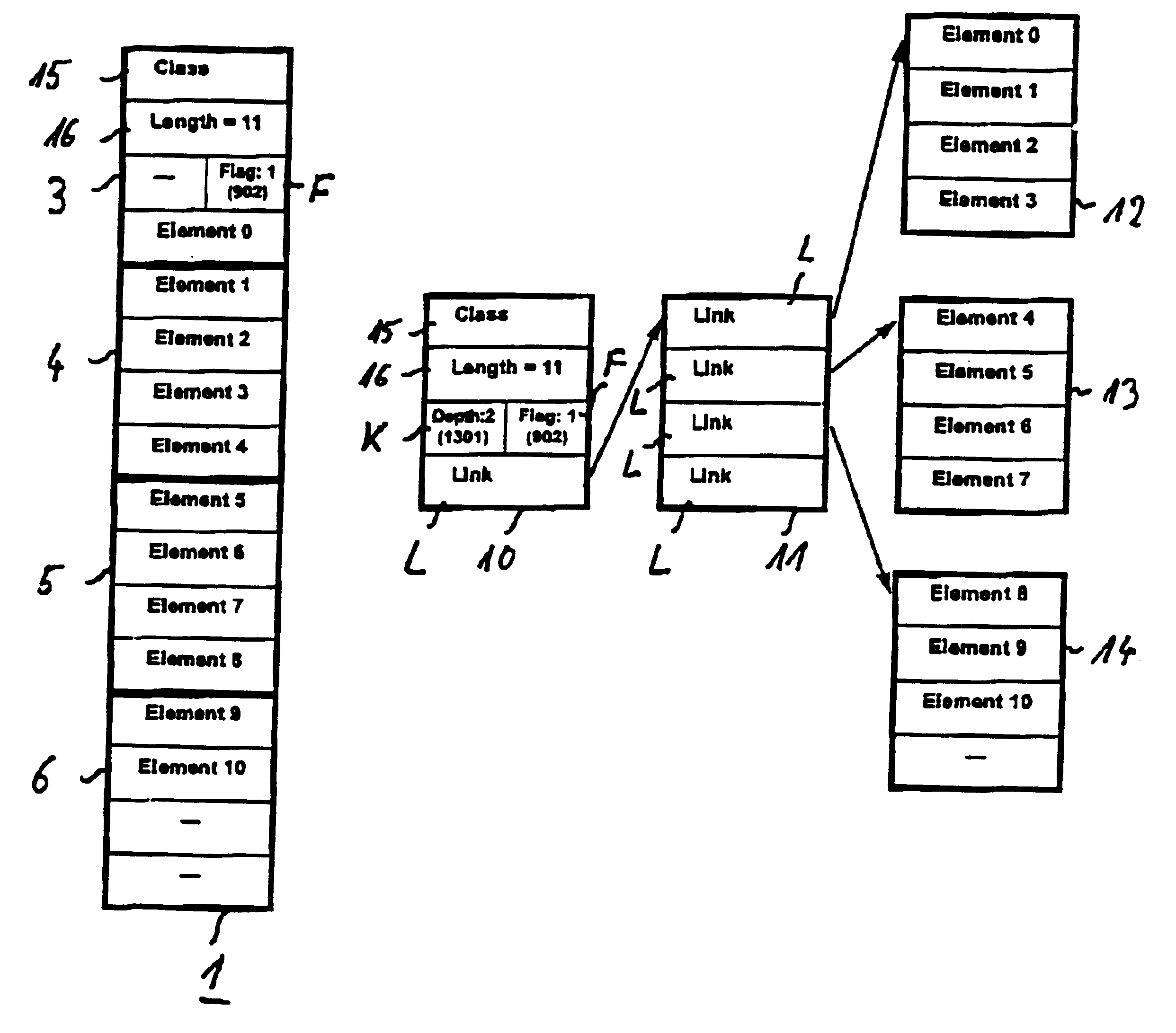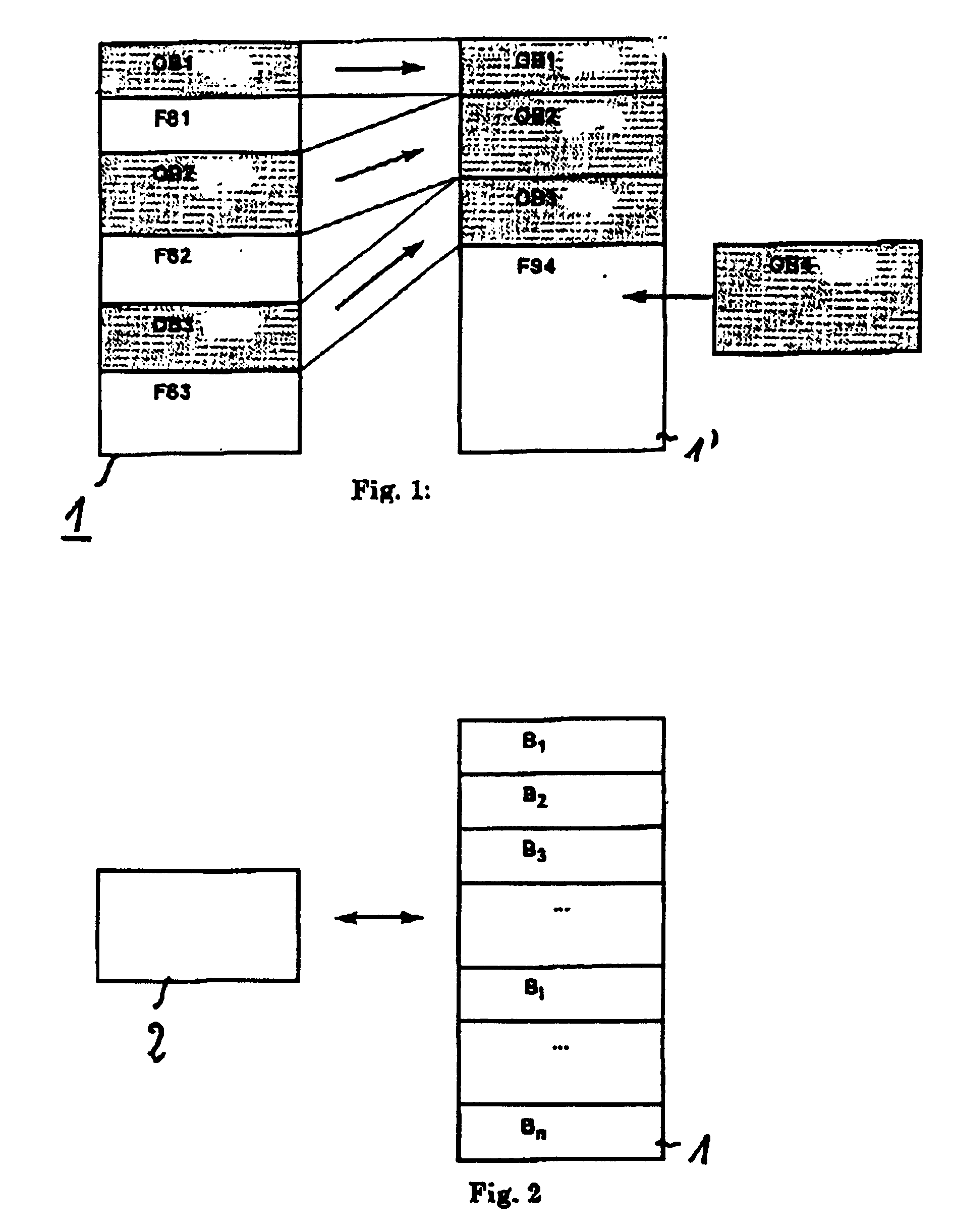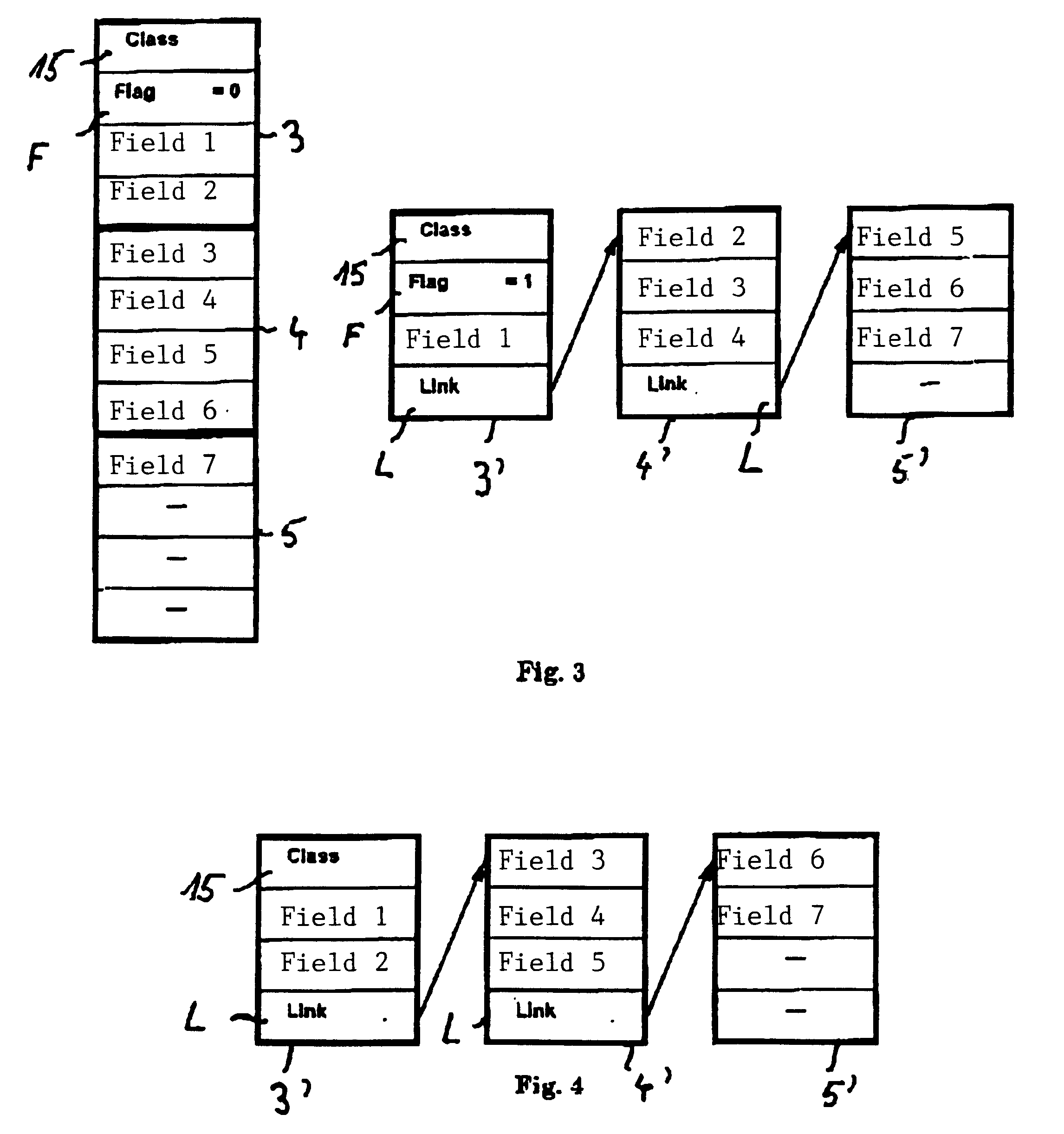Method of dynamically allocating a memory
a dynamic management and readwrite technology, applied in memory systems, instruments, electric digital data processing, etc., can solve the problems of slowed access, increased processing load, and the need to move used memory cells
- Summary
- Abstract
- Description
- Claims
- Application Information
AI Technical Summary
Benefits of technology
Problems solved by technology
Method used
Image
Examples
Embodiment Construction
FIG. 1 shows a conventional memory management system with a memory 1, that contains different objects OB1 through OB3 in different memory regions. Between objects OB1 through OB3 memory cells are located that were free meanwhile. Nevertheless, these free memory cells are not sufficiently large to store another object OB4 in memory 1 contiguously.
As state-of-the-art for the solution of this problem software tools are known that can copy or move objects OB1 through OB3 such that the used memory cells, as well as the unused memory cells, are contiguous such that the fragmented memory 1 is transformed into an unfragmented memory 1'. After this, the newly free memory range FS 4 is sufficiently large to store object OB4.
The problem of this memory fragmentation is that the memory is typically not ready for accesses during the times of reorganization of the memory 1. Such a solution is therefore normally not applicable for real-time systems.
Within the scope of the solution in accordance wit...
PUM
 Login to View More
Login to View More Abstract
Description
Claims
Application Information
 Login to View More
Login to View More - R&D
- Intellectual Property
- Life Sciences
- Materials
- Tech Scout
- Unparalleled Data Quality
- Higher Quality Content
- 60% Fewer Hallucinations
Browse by: Latest US Patents, China's latest patents, Technical Efficacy Thesaurus, Application Domain, Technology Topic, Popular Technical Reports.
© 2025 PatSnap. All rights reserved.Legal|Privacy policy|Modern Slavery Act Transparency Statement|Sitemap|About US| Contact US: help@patsnap.com



